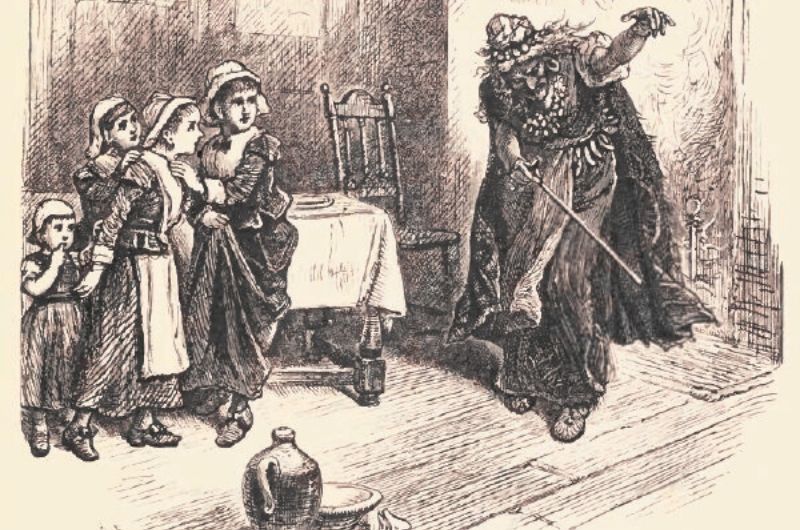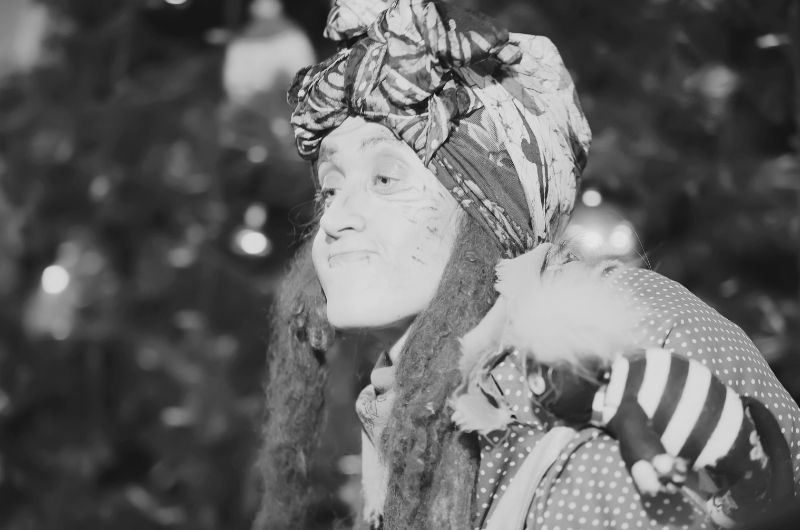
Famous Witches
Fascinating Stories and Legends
Witches and their stories have captivated people's imaginations for centuries. The witch hunts that took place between the 15th and 18th centuries brought forth many famous cases of women and men who were accused of witchcraft. In this article, we introduce some of the most famous witches and take a look at their stories and the historical context in which they lived.
Video: 5 Most FAMOUS WITCHES In History
Famous Historical Witches

Tituba Witch of Salem
Tituba (Salem Witch Trials, 1692)
Tituba was a slave from the Caribbean who lived in the house of Reverend Samuel Parris in Salem, Massachusetts. She was the first person accused of witchcraft during the infamous Salem Witch Trials. Her confessions and accusations against others contributed to the mass hysteria that ultimately led to the death of 19 people.

Bridget Bishop (Salem Witch Trials, 1692)
Bridget Bishop was a woman from Salem who was accused of witchcraft and executed during the Salem Witch Trials. She was the first person executed during the trials, and her case demonstrates the extreme prejudice and flawed justice that prevailed during that time.
Mary Bliss Parsons (Northampton Witch Trial, 1675)
Mary Bliss Parsons was a woman from Massachusetts who was accused of witchcraft in 1675. Despite the accusations, she was acquitted, and her case is considered one of the earliest witch trials in New England, setting the stage for the later trials in Salem.
Famous Witches in Legends and Folklore
The Bell Witch (Tennessee, early 19th century)
The Bell Witch is a famous American legend that developed in the southern states. The story tells of a witch who haunted the Bell family in the early 19th century and was responsible for a series of unexplained phenomena and tragedies. The legend of the Bell Witch remains one of the most well-known and chilling stories in American folklore.
The Witch of Pungo (Virginia, 1706)
The Witch of Pungo, also known as Grace Sherwood, was a woman from Virginia who was accused of witchcraft in 1706. She was found guilty of witchcraft and imprisoned. Her story is an example of witch hunts in the southern colonies and shows that witch trials were not limited to New England.
Famous Witches in Literature
The Witches of Eastwick (novel by John Updike, 1984)
The Witches of Eastwick is a novel by American writer John Updike, which follows three women in a small town in Rhode Island who develop supernatural powers and become entangled in a conflict with a mysterious man. The book was later adapted into a successful film and television series and remains a well-known example of witches portrayed in American pop culture.
The Witches of Oz (The Wizard of Oz by L. Frank Baum, 1900)
In L. Frank Baum's famous children's book "The Wizard of Oz," there are several witches, including the Good Witch of the North, the Wicked Witch of the West, and the Wicked Witch of the East. These characters have shaped the depiction of witches in American literature and culture and remain well-known and beloved to this day.
Famous Witches in Europe
Agnes Waterhouse (England, 1566-1567)
Agnes Waterhouse was a widow from Essex County in England who was accused of witchcraft in 1566. She was charged with making a pact with the devil and causing harm to her neighbors. She was found guilty and burned at the stake, along with her daughter and a man named Hugh.
Anna Göldi (Switzerland, 1782)
Anna Göldi was a Swiss maid who was accused of witchcraft and executed in 1782. She was the last person to be executed for witchcraft in Europe. Her case shows that witch hunts persisted in Europe until the late 18th century.
Baba Yaga (Russia)
Baba Yaga is a well-known witch figure in Slavic folklore, often depicted as an old woman with a crooked nose and a wart on her forehead. She lives in a hut that stands on chicken legs and is known for devouring people who approach her. She is often seen as a trickster character who can be both evil and helpful.
Morgana (England)
Morgana is a witch figure from Arthurian legend and is often portrayed as an evil witch who opposes King Arthur and his knights. She has magical powers and is known for her deceptions and seductions. Despite her malevolence, she is also a fascinating symbol of strong female figures in European literature and culture.
Joan of Arc (France, 1412-1431)
Joan of Arc, also known as the Maid of Orléans, was a French national heroine who fought against the English during the Hundred Years' War. Although she was not directly accused of witchcraft, she was viewed as a witch by her opponents because of her visions and her role as a leader of the French army. In 1431, she was convicted as a heretic and burned at the stake.
It is important to remember these stories to understand how superstition and prejudice can lead to innocent people suffering and dying. At the same time, these stories also show us the power of women and the importance of courage and independence. We should remember that witches were not only portrayed as horror and doom but also as symbols of women's ability to resist oppression and injustice.





